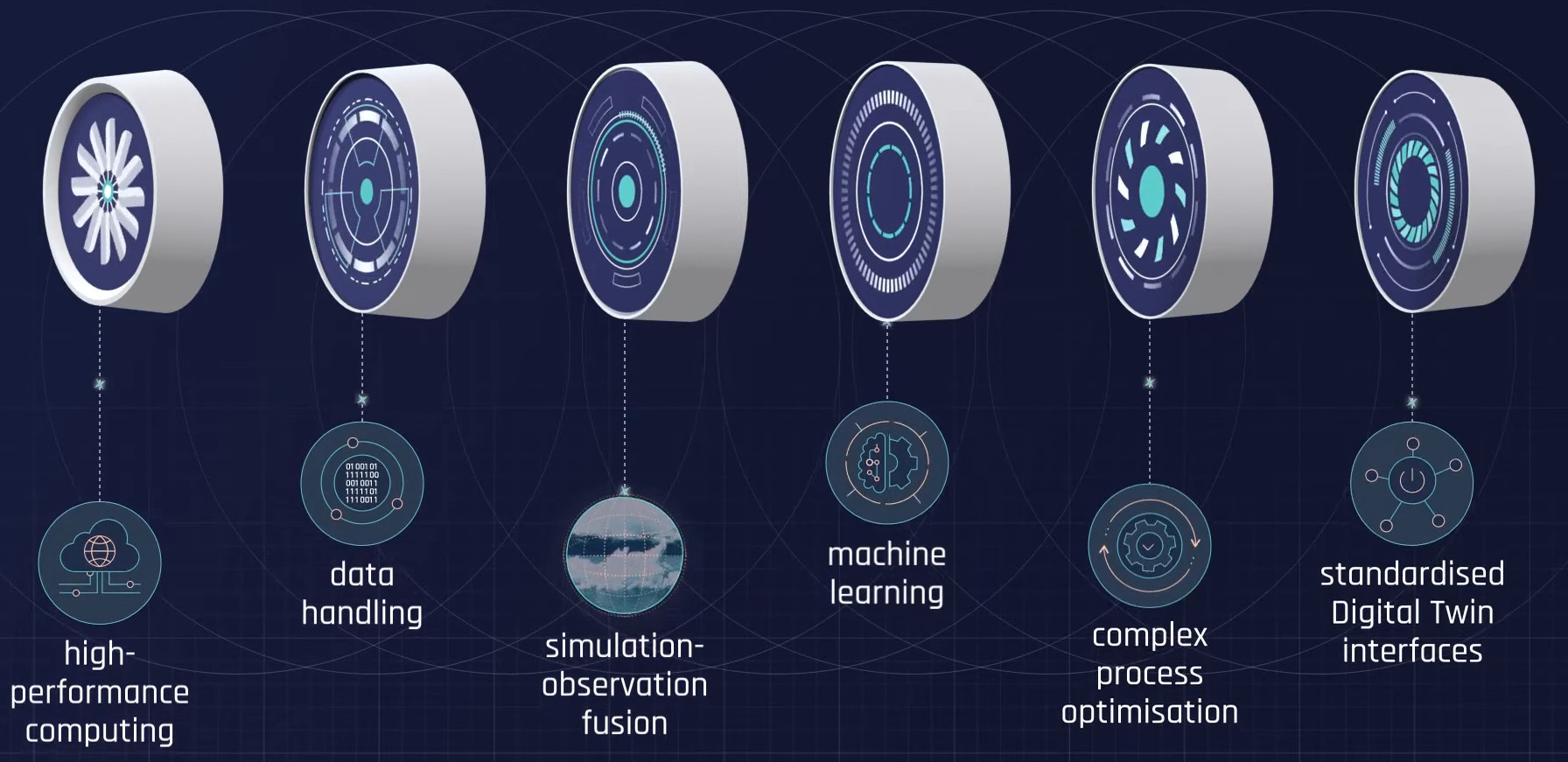As the world faces the escalating challenges of climate change, the need for advanced tools to understand and predict the complexities of the Earth system has never been greater. A major step in this direction is the development of Digital Twins of the Earth, sophisticated digital replicas that mirror the interactions of the Earth’s physical and societal systems.
These digital models allow policymakers, scientists, and citizens to visualise the potential impacts of human actions on climate and make informed decisions to mitigate risks and enhance resilience.
In the paper titled‘Digital Twins of the Earth with and for Humans’, our colleague Fernando Iglesias-Suarez and his co-authors explored how these models can be designed to not only represent physical processes but also incorporate human dimensions—behaviours, institutions, and decision-making processes. This is critical because climate change impacts communities, economies, and livelihoods. By embedding human interactions into digital twins, we aim to create more effective tools that guide evidence-based policy and inspire coordinated climate action at both global and local levels.
During Fernando’s time as a climate scientist at the German Aerospace Center (DLR), he contributed to this research, addressing a key challenge in climate science: developing more accurate Earth system models. Transforming climate data into real-world applications that help societies better prepare for the impacts of a changing climate continues to be his commitment now, at Predictia.
The Concept of Digital Twins of the Earth
The concept of Digital Twins—virtual representations of physical systems—originated in industry, where it has been used to optimise processes. Applying this to the Earth’s climate systems opens up exciting possibilities for addressing climate change.
In the above-mentioned paper, Fernando and his colleagues delved into how digital replicas can simulate the Earth’s environment and human interactions with it (Fig. 1). A Digital Twin of the Earth goes beyond traditional climate models by integrating vast amounts of data from observations, climate models, and machine learning systems. This allows for real-time monitoring and predictions, from global atmospheric trends to local impacts.
A key advancement is making these systems interactive. Rather than being passive consumers of climate data, decision-makers can engage with these digital twins to explore “what-if” scenarios. For instance, they can simulate the impacts of policy decisions, such as reducing carbon emissions or implementing flood defences, and visualise the outcomes in a clear and accessible way.
What sets this approach apart is its potential to integrate human and societal dimensions. By including factors like energy consumption and land use, digital twins provide a more holistic view of the Earth system. This ensures predictions are aligned with real-world complexities, offering actionable insights for decision-makers.
The potential applications are vast. Governments can use digital twins to model the impacts of environmental policies, urban planners can design more resilient cities, and communities can be empowered with the knowledge to adapt to climate risks. These systems aim to democratise access to climate information, making it understandable for a wide range of users.

Leveraging Climate Information
Our work at Predictia closely aligns with the Digital Twins of the Earth framework—transforming complex climate data into practical tools for decision-making across various sectors. This approach provides users with high-resolution data, predictive modelling and advanced analytics. We take global climate models and distil them into actionable insights local governments, businesses, and researchers can use to make informed decisions on climate adaptation and mitigation.
Much like the Digital Twins concept, our aim is to make climate data interactive and user-centred. For example, we generate tailored climate change predictions for sectors such as agriculture, energy, and urban planning — fields where accurate information is critical for future resilience. By using machine learning and advanced computational techniques, we improve the precision of data, creating tools that are scientifically robust and highly usable for local stakeholders.
In particular, the co-creation approach in developing these tools represents another area of synergy between the Digital Twins of the Earth framework and our work. We work directly with users to ensure the information we provide is contextually relevant. This mirrors the proposed human-centred approach of Digital Twins, where user needs guide the model’s development.
In this way, we go beyond simply presenting climate data, organising and interpreting it to facilitate evidence-based decision-making. Like in Digital Twins of the Earth, our tools allow users to explore “what-if” scenarios, enabling them to foresee the potential impacts of various climate strategies before they are implemented. This approach helps make complex climate models more accessible and actionable, aligning with the broader vision of empowering society to respond to climate challenges.

Connecting the Dots
While Digital Twins simulate and predict Earth system dynamics on a global scale, we at Predictia focus on delivering information that is useful at regional and local levels. Our expertise in high-resolution data and sector-specific risk assessments enables us to bridge the gap between global models and local stakeholders who need targeted, actionable information.
Climate risk management is one such contribution. For instance, our tools enable users to model the effects of future climate scenarios, such as rising temperatures on energy demand or water availability.By incorporating both physical data (e.g., temperature, radiation, and precipitation) and human factors (e.g., land use, energy consumption, and water management), our work complements the goal of Digital Twins: to create a more holistic view of climate impacts.
As Digital Twins of the Earth evolve to become more interactive and inclusive, tools like those we develop will be key in operationalising these concepts. By delivering fundamental climate data to the people who need it most, we ensure that it is not only available but also actionable and relevant to local decisions.
Interested in this topic? Should you want to reach out to us, please don’t hesitate to email us at predictia@predictia.es or to call us on (+34) 942 76 44 10.
